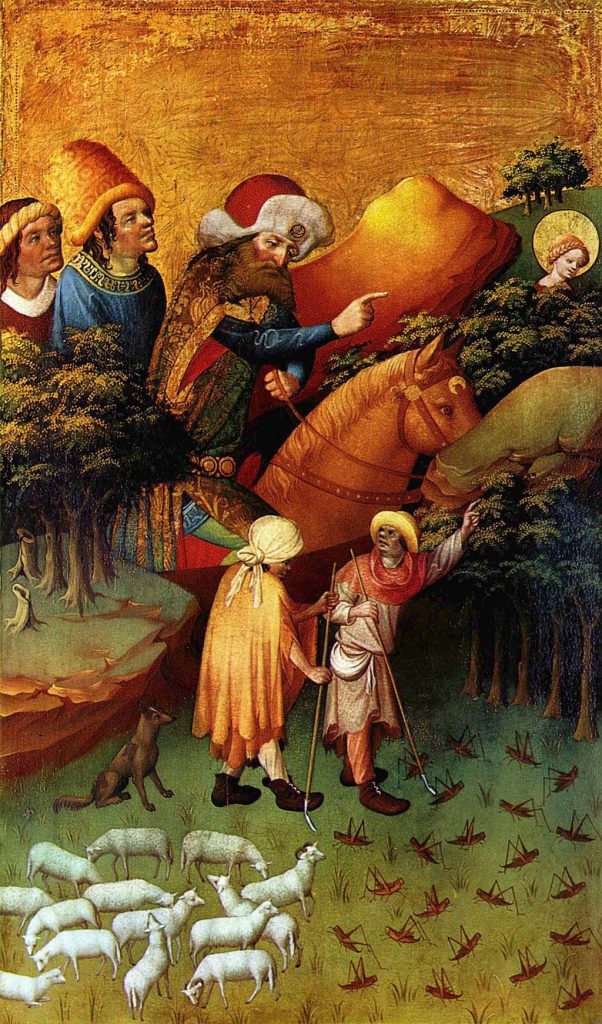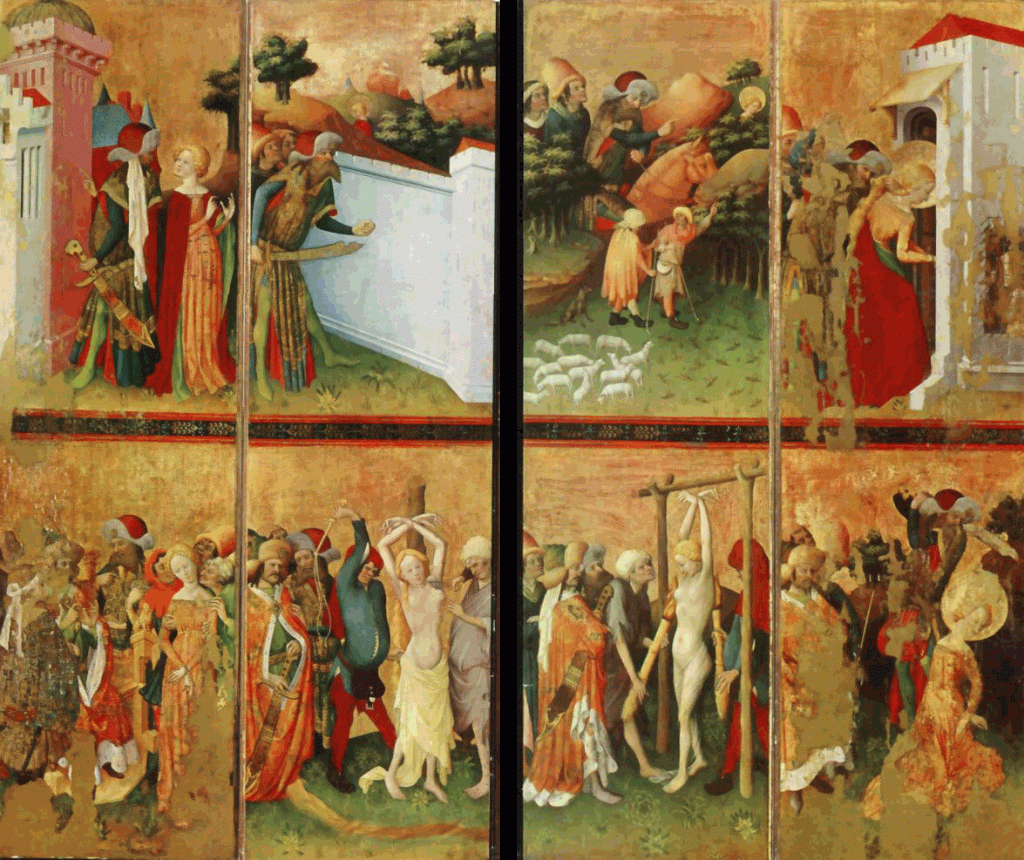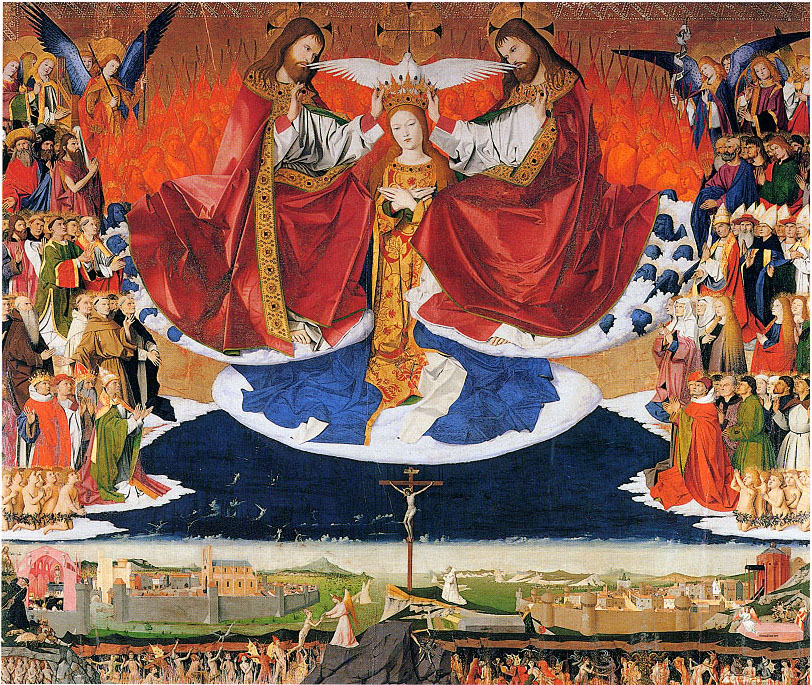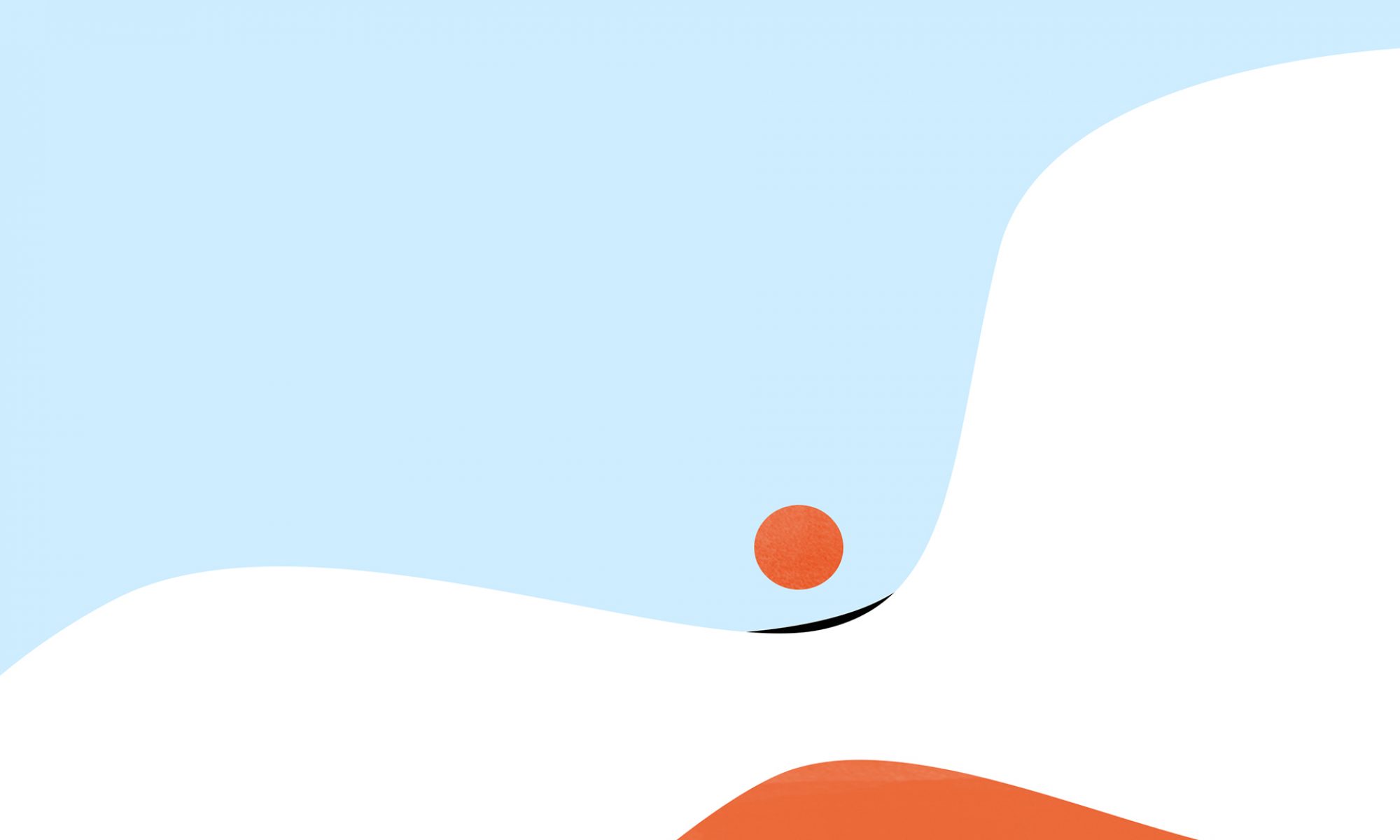Well-known german painter, Master Francke was born c.1380 and died c.1440. Compared to artists such as Sandro Botticelli or Giotto, Francke recognition only comes from few paintings such as the St Barbara Altarpiece (c. 1410)1and the St Thomas Altarpiece2.
Francke style became one of its own taking both inspirations from the delicate and soft approach of the French3 as well as the realistic depictions specific to Netherland regions 4 where he lived. Throughout the years, Francke developed an ability to demonstrate extreme detail in the clothing, scenery and faces furthering himself from the flat and repetitive style of the early Gothic Period — the Dark Ages, and verging on to the well-known Renaissance style where achieving perspective was a necessary part of the artwork. He pairs his unique technique with seamless gradients for instance in his piece “Locust miracle from Barbara altar from the Kalanti church in Finland”(c.1410-c.1415)5 as seen in the grass and the mountains, adding to the effect of depth, light source, and perception. His use of vivid colors gives him the ability to reinforce certain emotions and symbols e.g., death, status, and anger. With rich red contrasting with dark cool blues and greens and touches of gold not only make for a touching artwork but a beautifully composed one as well.
Bibliography:
1.Francke,Master. St.Barbara Altar. Finland
2.Francke, Master. The St. Thomas Altar from St. John’s Church. 0AD, St.John’s Church, Hamburg, Hamburger Kunsthalle.
3.Quarton, Enguerrand. The Coronation Of The Virgin. 1452-53. The Coronation of the Virgin by Enguerrand Quarton, 1453-54.
4.Eyck, Jan Van. The Arnolfini Portrait. 1434, National Gallery, London. 5.
5.Francke, Master. Locust Miracle from Barbara Altar . 0AD, National Museum of Finland, Helsinki, Finland.

Locust Miracle from Barbara Altar 
The Martyrdom of St. Thomas of Canterbury, panel from the St. Thomas Altar from St. John’s Church, Hamburg. 
St.Barbara Altar 
The Coronation of the Virgin 
The Arnolfini Portrait
